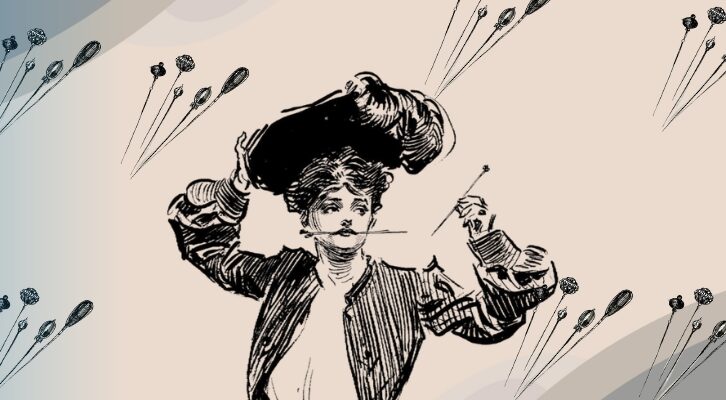
A Very Odd Night in a Possibly Fake North Korean Village
In Which Food Poisoning is Diagnosed as "Culture Shock"
The following is excerpted from All Monsters Must Die, by Magnus Bartas and Fredrik Ekman (trans. Saskia Vogel).
By the time we are quartered outside a coastal village, night has fallen. We are near the Sea of Japan, which in Korea is called the East Sea. Something that looks like an idyllic village built in a semi-traditional style sits away from a neighboring settlement. But it was constructed in 2006, the same year as the nuclear weapons test. The guide calls this part of the trip a “home stay” and says that now we’re going to make contact with regular North Korean citizens.
Sitting on the veranda of the home of the elderly woman we have been assigned to stay with, we see small wooden boats returning from sea. In the garden, there is an open fire where fish are drying on suspended chicken wire; there is a vegetable plot; a pair of puppies are nipping at each other’s ears. The woman squats at the workbench next to the fire and prepares dinner. We’re allocated rooms in a separate part of the house.
The woman smiles as she shows us our rooms, but she doesn’t speak a word of English. By North Korean standards, these homes are luxurious. Ours has a refrigerator and television, but no running water. A hose runs from a water tank outside the house to the washbasin inside. The smell of fish permeates everything. We wonder if our hosts always live here, if this is their normal life, or if they are just actors. Why would an elderly woman live in a spacious house alone? This could be the North Korean version of The Truman Show, a film where the main character grows up in a small town that’s really a giant studio set and he is always followed by a camera. All the houses and buildings are sets, and everyone but Truman is an actor.
In the evening, there’s a power outage and everything goes pitch black. When the electricity comes back on after a few hours, a group of military men arrive. We catch a glimpse of them when they sit down in the kitchen, smoking and watching tv.
Our dinner is not served in the house but at a nearby restaurant that is only a few minutes’ walk. It’s easy to see which dining room is for the North Koreans—rows of shoes are lined up outside the entrance. They eat sitting on the floor, and no meat is served with the kimchi, rice, and vegetables; they have to make do with dried fish. It’s also not a restaurant for the villagers—it’s for the guides and the chauffeurs. It’s made clear to us that there are no other restaurants or bars in the North Korean countryside.
When we ask Mr. Song about it, he says that “people prefer to socialize at home.”
We discover that members of the German Friendship Association are in the next room. In many European countries, small Friendship Associations of North Korea were established in the 1970s. Their members believe that everything about North Korea is fantastic, and nothing can change their minds. They aren’t allowed to spend time with their Korean brothers, however; instead, they have to endure dining in the tourist section, where we sit at tables in the Western manner, on chairs. We look at the Germans in the adjoining room. They are bearded and wear large sunglasses and knitted vests. They don’t look happy. We don’t feel well and leave the rest of the group at the restaurant. Back at the house, food poisoning breaks out with full force. After a few hours, Mr. Song is informed. He is worried and calls a doctor.
The electricity goes off again, and the only source of light is the guide’s flashlight. The smell of dried fish is intolerable. A man wearing a cap and no shoes arrives, followed by two women; they give the impression that they’ve come straight from the fields. The barefoot doctor and his assistants put on white jackets. Then the doctor pulls a blood pressure monitor from his bag. After an examination and a conversation with the guide, the doctor ponders. He explains that our illness is a symptom of shock from coming into contact with Korean culture. One of the nurses takes out a giant syringe. The doctor offers us a shot against culture shock, but we politely decline. Later, we hear about the rest of the night at the restaurant. Trond—the large, bald, jovial Norwegian—and the two young farmers from Värmland ordered beer after beer. Soon a squalling, singing gang gathered around Trond. Up until that point, the farmers hadn’t said much, but this broke the ice and they joined in the singing. Trond toasted loudly, clinking bottles of Taedong.
The bearded Germans in the next room didn’t appreciate the festivities; they wanted the Norwegian and his friends to take it down a notch. It’s not appropriate to act like this in North Korea; it’s disrespectful. But Trond paid no mind to the buzzkilling requests, until one of them stormed into the room and shouted in English that a spell in a camp would do them good. It was remarkable that the German sympathizers acknowledged the prison camps—Friends don’t tend to broadcast their existence and not much is known about them. There are a few eyewitness accounts, but some of them have been manipulated for South Korean propaganda. It is said that they are in isolated areas, but a number of them are only tens of miles from South Korea, Russia, and China—countries where you can generally move about freely. A U.S. mapping project called “North Korea Uncovered” has collected testimonies from defectors, investigative reporters, academic texts, accounts from visitors and specialists, and they’ve studied satellite images and photographs. There is evidence of six camps, totaling 200,000 interned people.
According to the project there are two kinds of camps: camps for political prisoners and their families, where most are locked away for life, and camps for criminals who have been tried in court and are serving a sentence. Some camps have both political prisoners and regular criminals. The German concentration camps weren’t unknown during the Second World War. Inspectors arrived and wrote reports about what was going on there. The scope of the extermination wasn’t known, but the existence of the camps was. The North Korean work camps, however, don’t officially exist according to North Korea. But thanks to Google Earth, anyone with access to the Internet can measure the distance on a satellite image between the village we’re staying in and what looks like a gigantic camp facility that is assumed to be “Camp No. 16”—Hwasong concentration camp, the largest in size if not in numbers. Ten thousand prisoners are said to be interned there, forced into slave labor in the underground tunnels where the nuclear testing was carried out. According to a guard who defected from another camp, Hwasong is the most feared of its kind. Those who are considered the most dangerous political opponents are kept there with their families. On December 20, 2007, 120 prisoners fled from Camp No. 16, according to the Korean evening paper Daily NK. By February, twenty-one had been recaptured. None of the remaining escapees managed to get out of the country. We wonder if any of them are still alive, if they are hiding somewhere out there in the night listening to the same cicadas singing in concert.
More is known about Kwan-li-so 15, the Yoduk concentration camp, than about Hwasong 16. People have managed to escape from Yoduk into neighboring countries. It is mainly a camp for political prisoners, though calling these inmates “political prisoners” isn’t quite accurate. You can land in Yoduk for being at the wrong place at the wrong time, because you’ve seen too much and know too much. Knowing secrets about the ruling dynasty is especially dangerous. Kim Young-soon, a choreographer who managed to flee the camp and reach South Korea in 2003, gave an account of her experiences to the U.S. Congress in 2011. She had ended up in the Yoduk camp because she knew about Kim Jong-il’s relationship with her friend, the actress Song Hye-rim. In 1971 Song, who was North Korea’s biggest film star at the time, gave birth to Kim Jong-il’s first son, Kim Jong-nam. As long as Kim Il-sung was alive, this out-of-wedlock son was to be kept a secret at all costs. The mere knowledge of his existence led to internment; even the doctor who oversaw the baby’s birth was sent to Yoduk. Her whole family was forced to join her. In her account, Kim Young-soon listed some of the reasons for a person to end up in Yoduk, cases that she learned of from her fellow inmates: breaking a statuette of Kim Jong-il, reproducing a portrait of Kim Il-sung without permission, putting a newspaper featuring Kim Il-sung’s picture on the floor, listening to South Korean radio, watching a South Korean film, saying something in casual conversation that could be interpreted as a criticism of the system. Those who report “disloyal citizens”—citizens who have sighed because there is nothing to buy in the store—are considered good and patriotic, and this informant culture depletes social life at the same rate that the political camps are being filled with inmates. Most of the prisoners aren’t told why they have been interned. Allegations aren’t read aloud and no trials are held. Many have been sent there because someone in their family is considered untrustworthy. As a relative, you’re infected through the bloodline. The family debt isn’t arbitrary—it’s systematic, and it mirrors the social traditions across Korea, both North and South. One person’s actions either honor or dishonor both the immediate family and their relatives, all in accordance with Confucian tradition. In South Korea, petty crimes and corruption aren’t particularly dishonorable. The more serious crimes are against one’s own family, against the rules of the bloodline: filial piety, duty to your children, securing a family’s status, and the children’s suitable choice of spouse. In North Korea, the most serious crime one can commit is disloyalty to what you might call the “big family”—that is, the leaders, the party, the state apparatus, and, by extension, the nation. Three generations of a family will be sent to a work camp for disloyalty.
Kim Young-soon was arrested at the central railway station in Pyongyang and taken to a cell that was disguised as a regular apartment in a residential area. She was made to put on a hospital gown and left alone. A mother of four with a newborn, she fainted from the ordeal. She was cared for like a patient by two guards but was given no explanation as to why she was there; the guards didn’t ask or answer any questions. Eventually they informed her that she had been sentenced according to a ruling by the party. It was suggested she’d said something that had leaked to South Korea, and shouldn’t she take responsibility for that? Kim wasn’t told anything else. She had spent two months under constant supervision, dressed in the hospital gown. Along with her parents and her four children, she was sent to Yoduk. She was told that if she worked hard she would eventually be allowed to leave the camp. If she didn’t, she’d be there for the rest of her life.
From All Monsters Must Die: An Excursion to North Korea copyright ⓒ 2011 Magnus Bärtås and Fredrik Ekman, translation copyright ⓒ 2015 Saskia Vogel. Reproduced with permission from House of Anansi Press. Distributed in the U.S by Publishers Group West. www.houseofanansi.com
Magnus Bartas and Fredrik Ekman
Magnus Bärtås teaches at the University College of Arts and Crafts in Stockholm and has also published an anthology about the borderland between literature and the visual arts. He is also a filmmaker, photographer, and visual artist. Fredrik Ekman is a writer, librettist, and editor based in Stockholm. His musical works have toured across Europe.






















